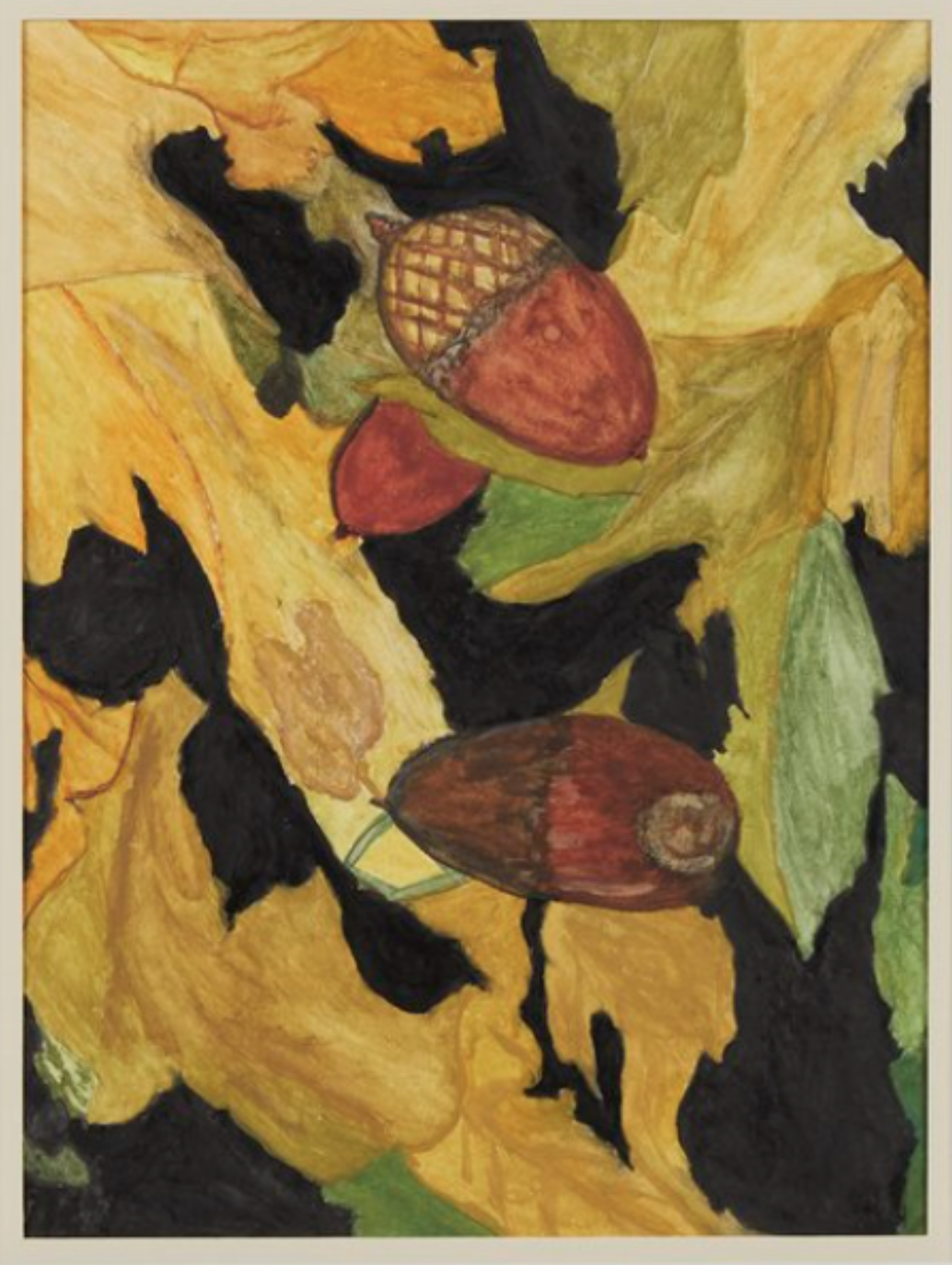 Image 1 of 1
Image 1 of 1


utim ċa Print
Art: utim ċa
Artist: Debra McBrien // Nevada City Rancheria Nisenan Tribe
Collection: VTA 2023: Story of Land, Water, and People
Art Description: utim ċa, known today as an oak tree, was a foundational part of Nisenan daily life.
utim ċa had a variety of uses that benefited the people. It was used to treat a variety of ailments and was also a key food source. Additionally, the Nisenan used all parts of the oak tree: the bark, leaves, and acorns were used medicinally; the wood was used to make a foot-drum in the Roundhouse; and the oak galls were commonly used to make dyes.
The acorn from the black oak tree was a prized resource and was traded for other valued items that were not available locally. For example, abalone, seaweed, shells, obsidian, different foods, and medicine items were highly sought after by the Nisenan and the Tribe traded their acorn, deer meat, freshwater eels, hard-to-find basket materials, etc.
Locally, specific acorn trees were maintained by specific families. Each family harvested what they needed and took care of the health of those trees spiritually, as well as burning to clear away insects and harmful fungi.
Print Size: 9” x 12”
Art: utim ċa
Artist: Debra McBrien // Nevada City Rancheria Nisenan Tribe
Collection: VTA 2023: Story of Land, Water, and People
Art Description: utim ċa, known today as an oak tree, was a foundational part of Nisenan daily life.
utim ċa had a variety of uses that benefited the people. It was used to treat a variety of ailments and was also a key food source. Additionally, the Nisenan used all parts of the oak tree: the bark, leaves, and acorns were used medicinally; the wood was used to make a foot-drum in the Roundhouse; and the oak galls were commonly used to make dyes.
The acorn from the black oak tree was a prized resource and was traded for other valued items that were not available locally. For example, abalone, seaweed, shells, obsidian, different foods, and medicine items were highly sought after by the Nisenan and the Tribe traded their acorn, deer meat, freshwater eels, hard-to-find basket materials, etc.
Locally, specific acorn trees were maintained by specific families. Each family harvested what they needed and took care of the health of those trees spiritually, as well as burning to clear away insects and harmful fungi.
Print Size: 9” x 12”
